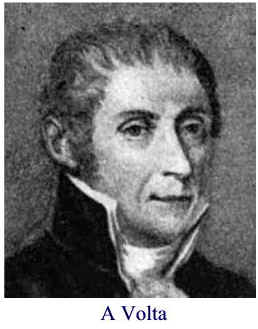It was difficult for early people
to distinguish between electricity and magnetism. People experienced magnetism and static electricity since
civilization began. Both phenomena "attract"
other substances. Cloth when rubbed on certain substances could
attract small items like a feather. Lodestone could attract small
pieces of metal.
Today, without electricity, our society
would be a very different one. Humans have learned to control the
electron to create wild and wonderful displays. Students can
hardly imagine
life without electricity. There would be no elevators, toasters, or
video games. Computers, light bulbs, television, and radio would only be
in the minds of dreamers. We are a world dependant on the electrons.
 Rumor has it that
Hoang-Ti, the founder of the Chinese empire around 2635 BC, used a magnetic
compass to guide his chariot to guide him in fog.
Rumor has it that
Hoang-Ti, the founder of the Chinese empire around 2635 BC, used a magnetic
compass to guide his chariot to guide him in fog.
It is well documents that in
600 B.C., Thales of Miletus, a Greek scientist and philosopher,
discovered the attractive properties of amber when the amber was rubbed
with cloth. This was the beginning of investigating a
"charged" object.
In 1492, Christopher
Columbus discovered that the declination of the compass needle varies
for different parts of the world. In 1600, William Gilbert published De
Magnete, six volumes describing the Earth as having the properties
of a huge magnet. He coined the term "electricity" from the
word "electron," the Greek word for amber. Amber was
also noted to create sparks. Even back then,
people somehow noticed that electricity and magnetism were closely
related.
In the mid 1700's there was a
furry of excitement over understanding the difference between magnetism
and electricity. Electricity started to develop into its own field
of study. In 1729, Stephen Gray, an English experimenter, discovered conductors and nonconductors
and formulated the use of insulation. In 1733, Charles Francois de
Cisternay Du Fay of Paris, discovered two kinds of electricity -
vitreous (positive) and resinous (negative). He also discovered that
like charges repel and unlike charges attract. In 1747, Benjamin
Franklin advanced the understanding of electricity and invented the
lightning rod. In 1771, Luigi Galvani, an Italian physiologist,
discovered that electricity is part of the living body. He discovered
that dead frog legs "jumped" when electricity was put on nerve
ends.
In the late 1700's to early 1800's
several people discovered a new understanding of electricity
that took our society into the technological age. These inventors and
scientist built their understanding from various experiments that lead
to major breakthroughs to the electronic age of today.
In 1785, Charles
Angustin de Coulomb advanced the theory that electrical charges can be
mathematically calculated. In 1800, Allesandro Volta (Italian),
discovered the first practical method of generating electricity. In
1819, Hans Christian Oersted, a Danish physicist, discovered a magnetic
field is caused by electric current. In 1820, Andre Marie Ampere
(French), established and proved the relationship between electricity
and magnetism. In 1821, Michael Faraday (English physicist), developed
an understanding of how electricity and magnetism may create what is
later called a motor.
There was then a
rapid increase of knowledge from people such as George Simon Ohm
(German), Joseph Henry (American), Karl Friedrich Gauss (German),
Heinrich Emil Lenz (Russian), Samuel Morse (American), James Maxwell
(Scottish), Alexander Graham Bell (American), Thomas Alva Edison
(American), Heinrich Hertz (German), Nicola Tesla (American) and
Guglielmo Marconi (Italian). The names continued and expanded, and the
electronic revolution took place.
Note there are few
prominent women in these fields. This was because they were usually not
allowed to take part in such subjects. The Chinese, Arabs, Africans,
Australians and other parts of the world were not part of this
revolution because of lack of communication from the center of
discoveries (Europe) and the rest of the world. In addition, politics
and wars may have disrupted the "inventiveness" of
people in different parts of the world.
PROCEDURE:
- Read Electrons and the Hairy Monster to students. They may
be familiar with it from a 3rd grade lab. This is help
review the connection between electricity and magnetism.
- Use the History of Electricity SlideShow to go over some
of the history described in the "Background" information
above.
- You may want to give students a
research project on learning about an historical point in electricity.
Note that electricity and magnetism's history are intertwined. Use the Internet or books in the
library for students to search more on the evolution of electricity.